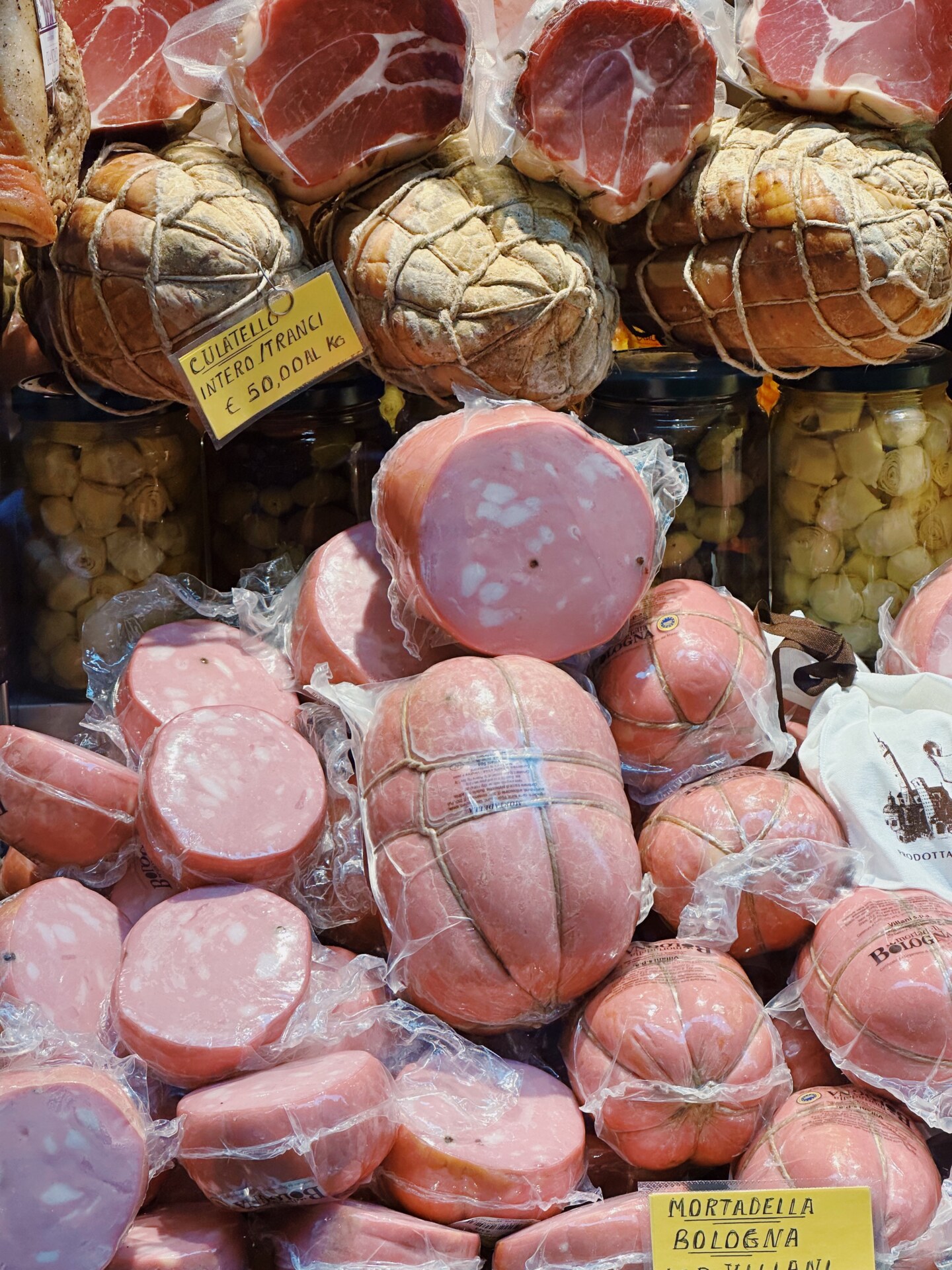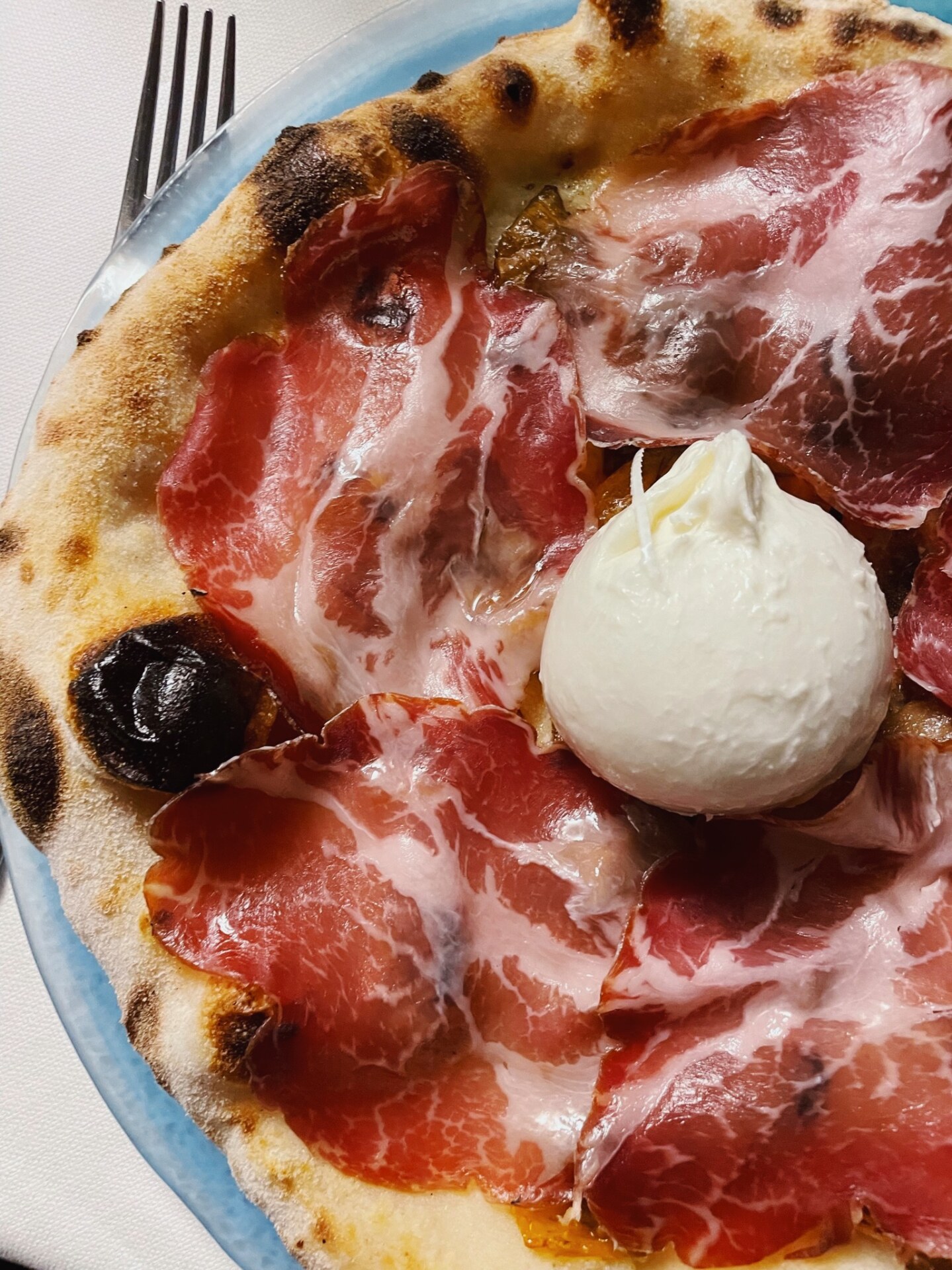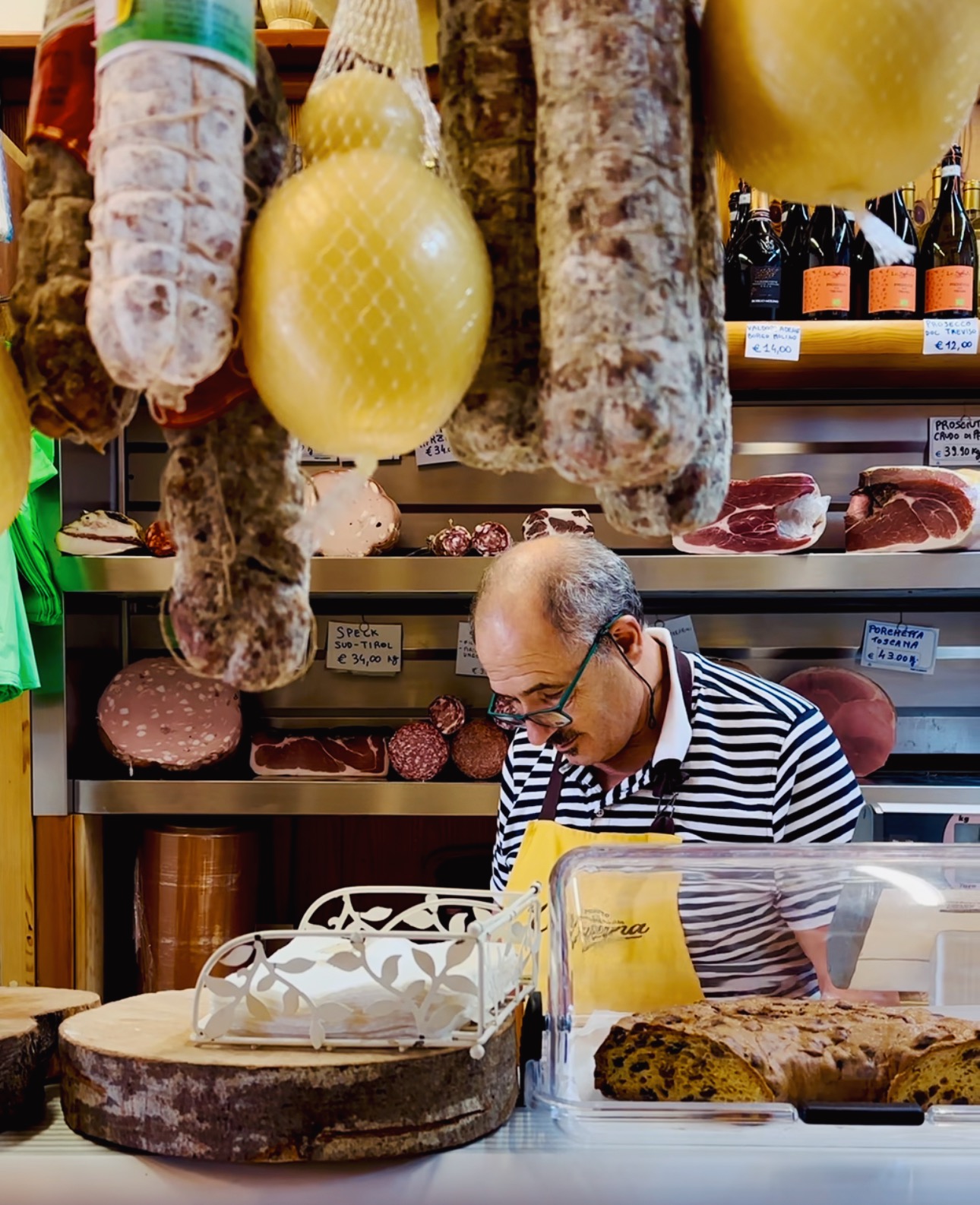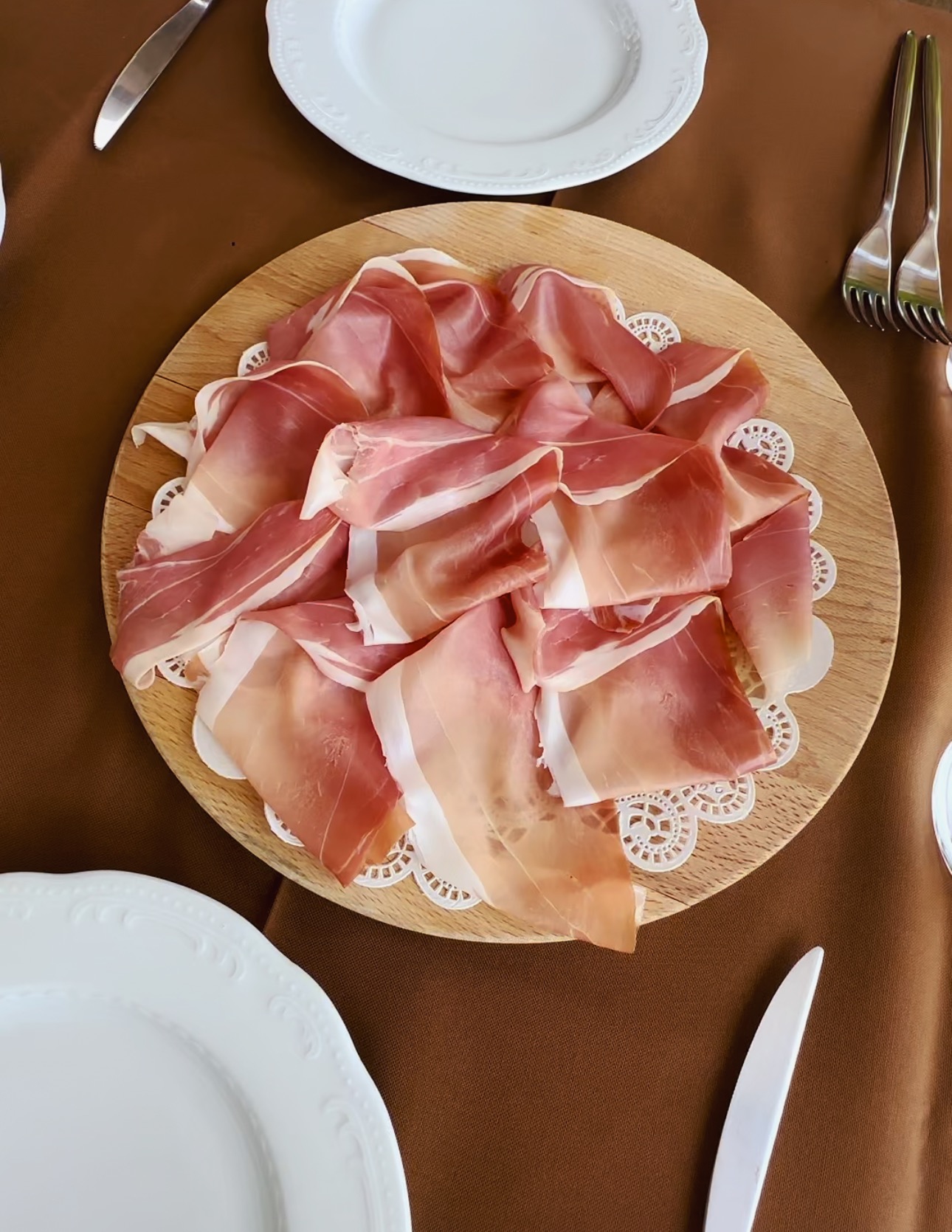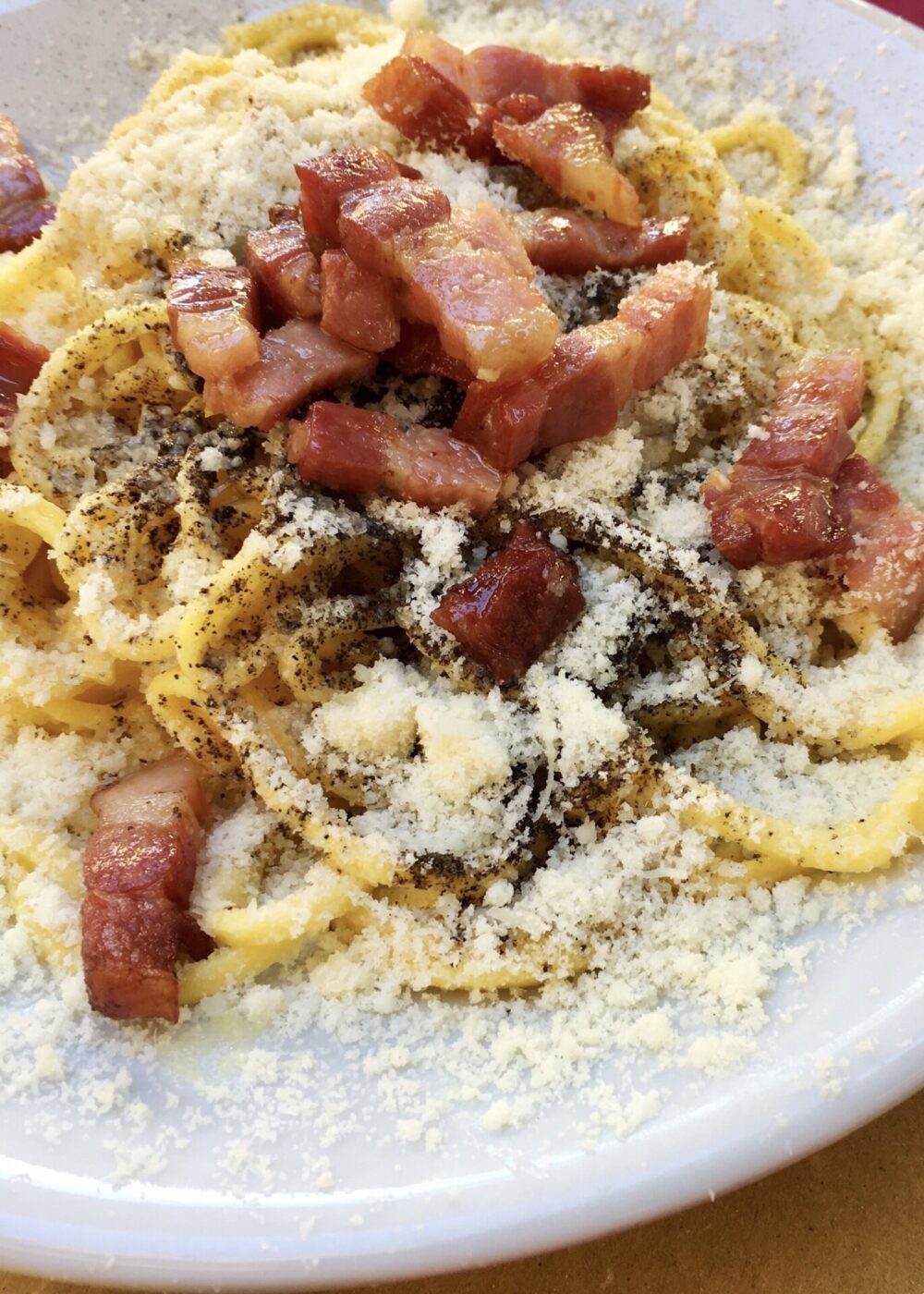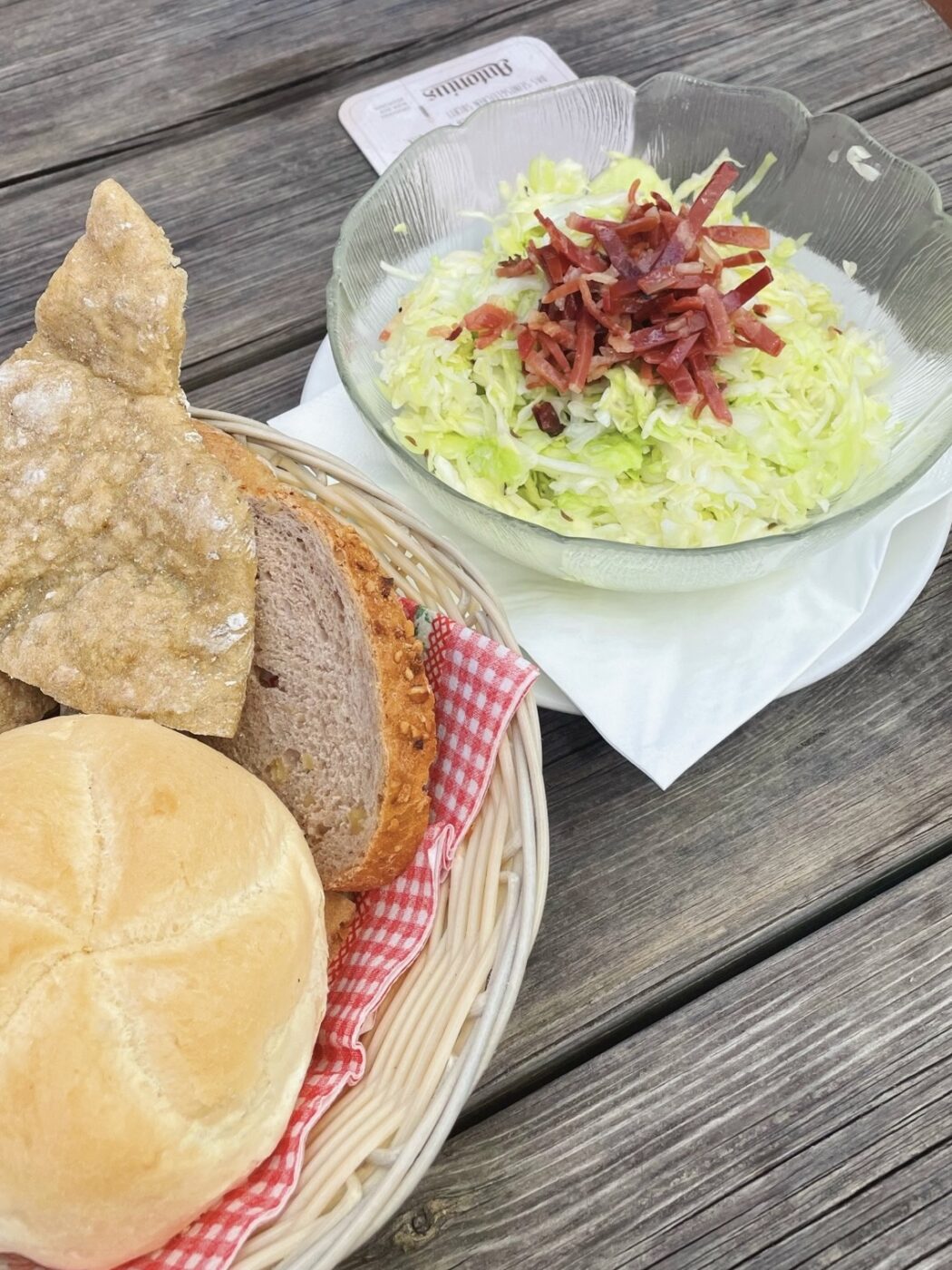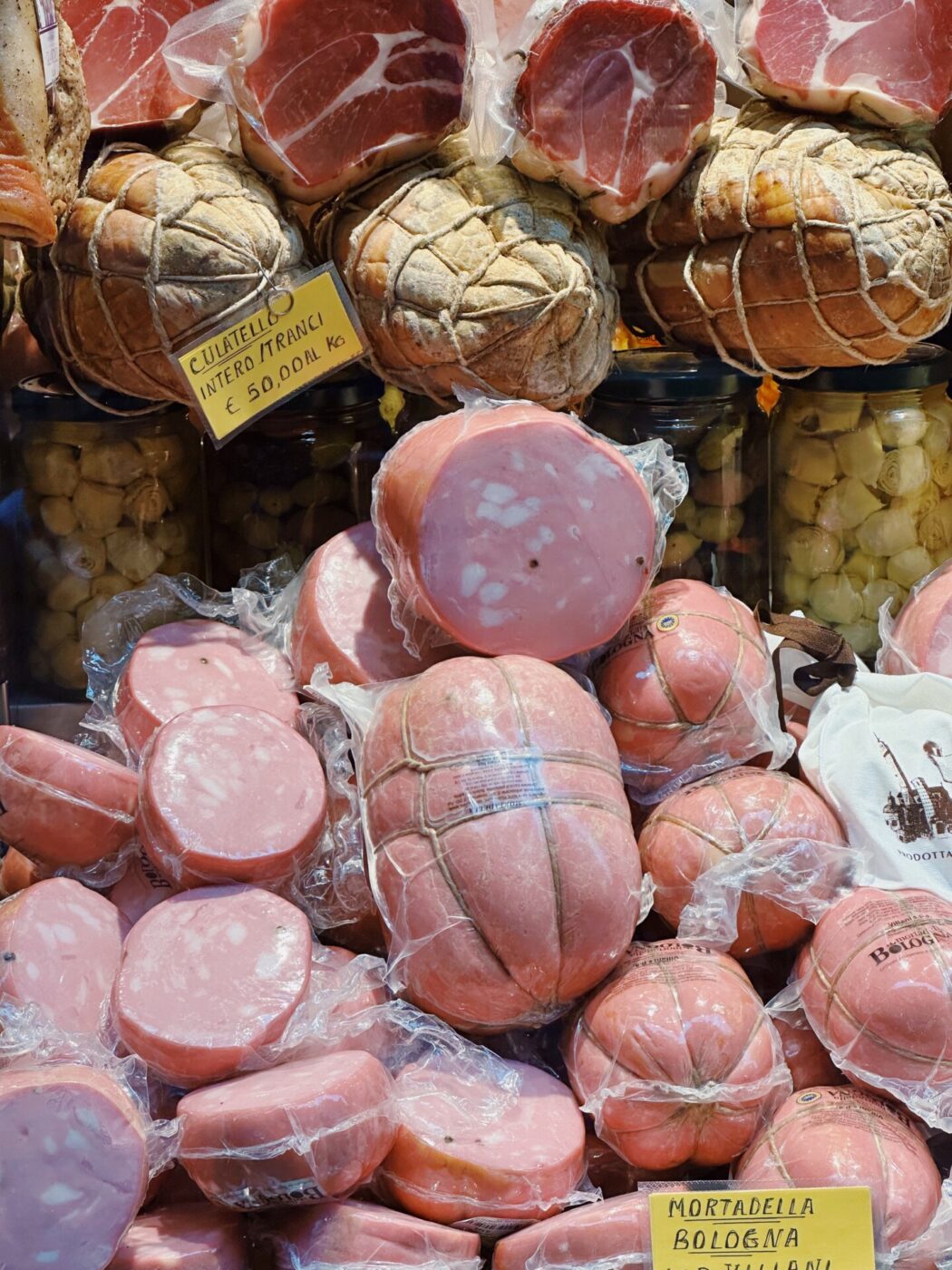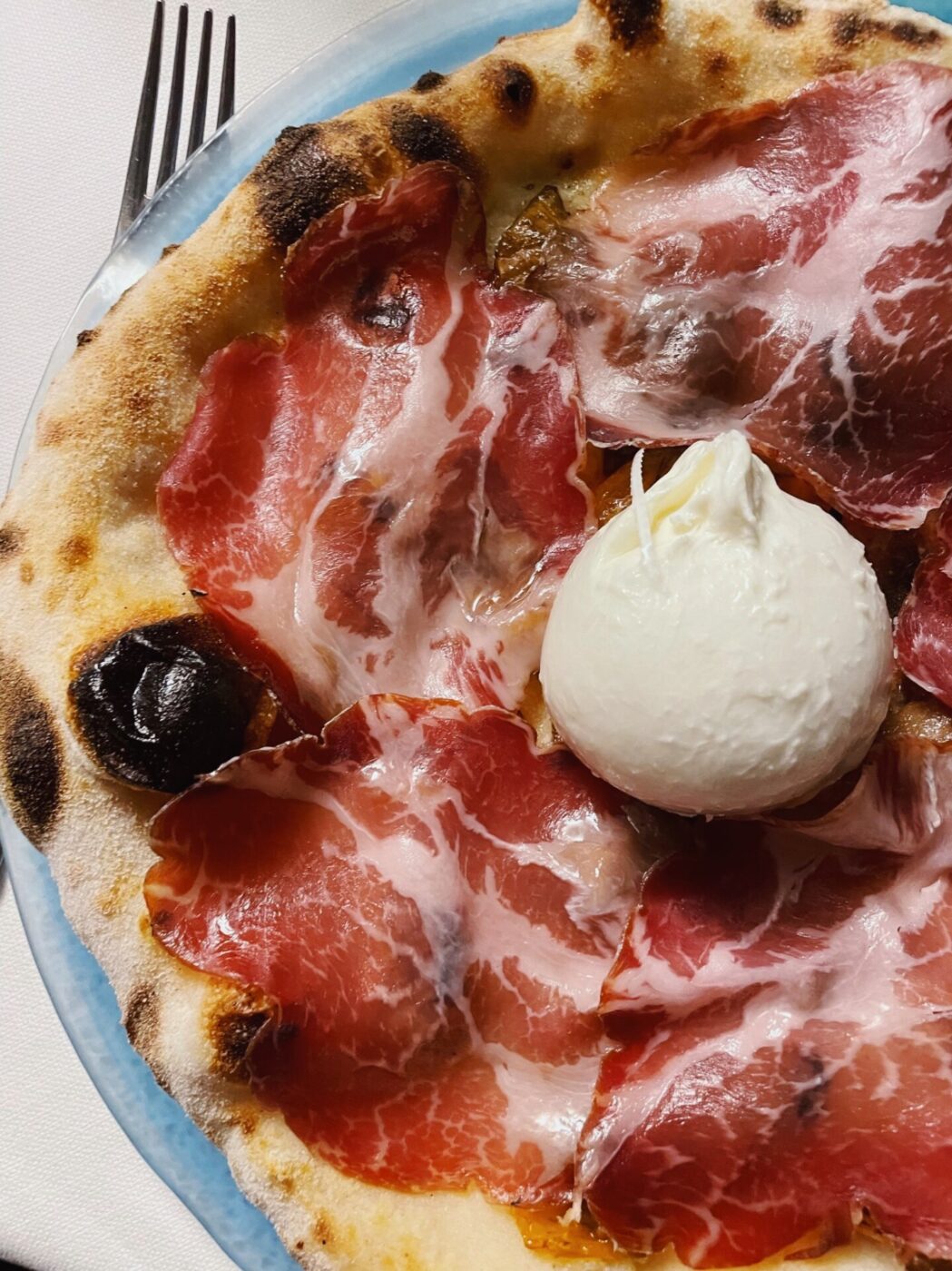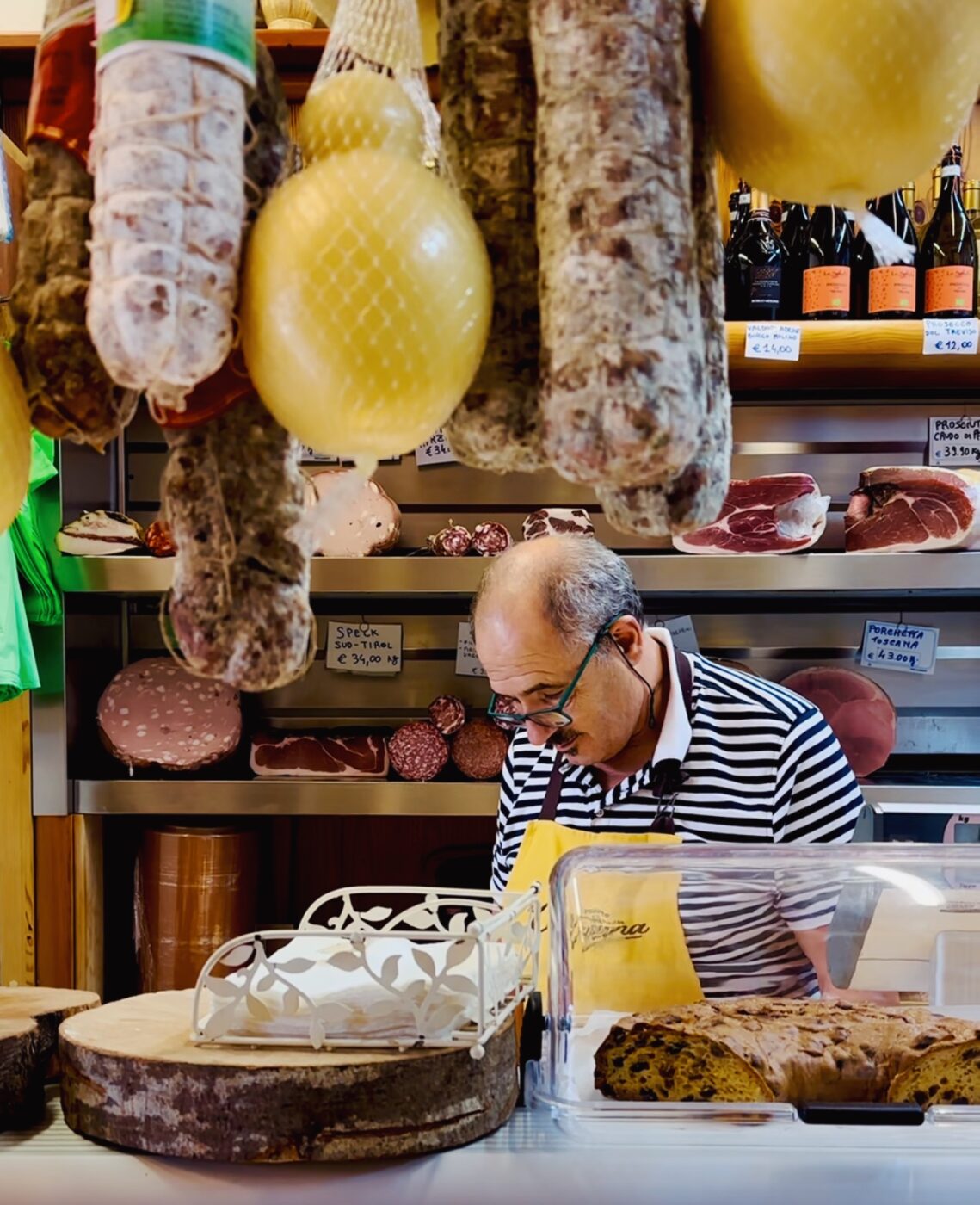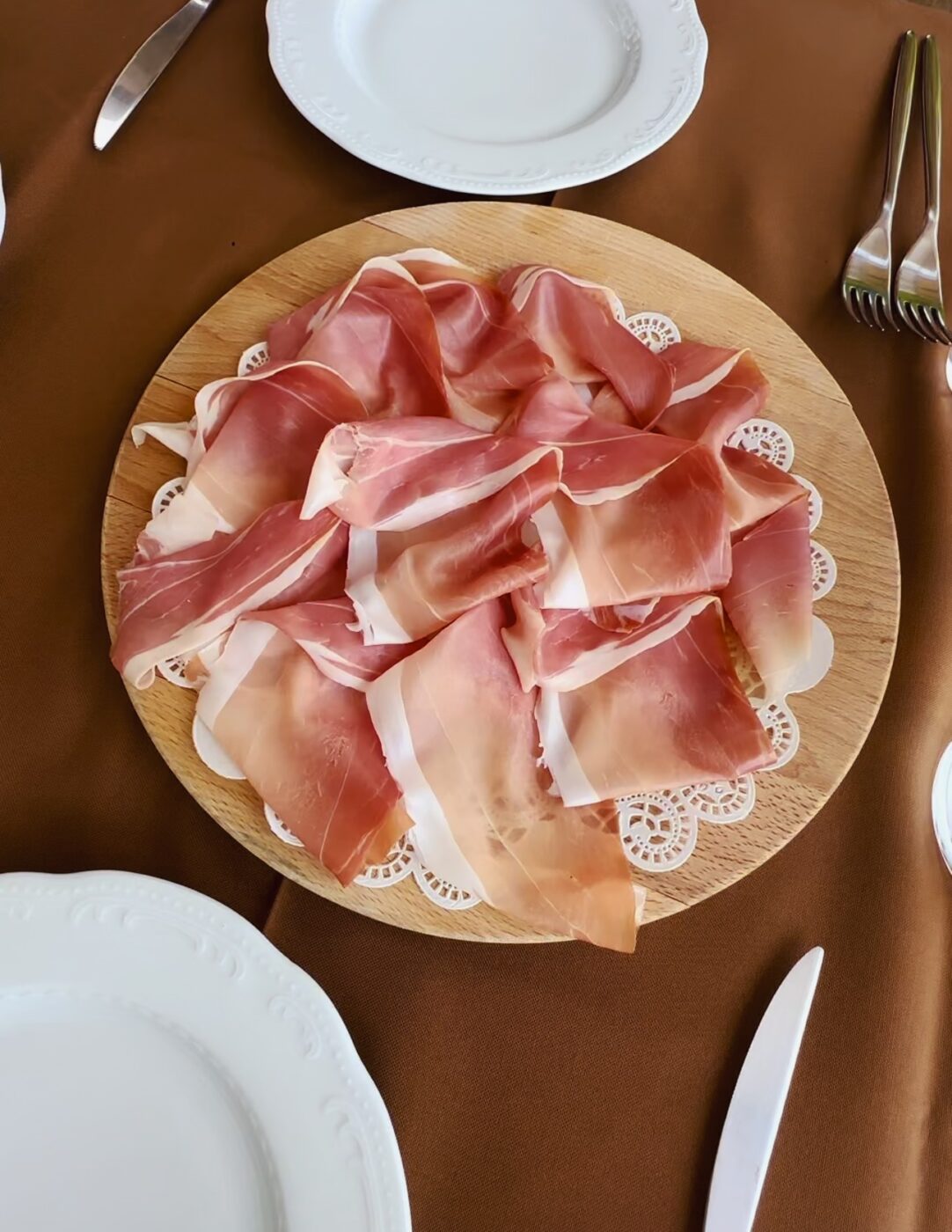Deli meats, move aside. Italy’s cured meats, known as salumi, are certainly not to be equated with generic cold cuts like baloney and sad sack lunches: these salty slices are a cornerstone of the Italian food pyramid, whether stuffed in a panino, layered atop regional fried doughs, or served in the smorgasbord that is a tagliere.
The earliest records of cured meat production in Italy date back to the Roman era—meat was salted and dried to preserve it for longer after slaughter, extending the shelf life in a time pre-refrigeration. Making sausages and salamis also provided a practical way to use all the odds and ends and scraps that might be left over after processing more desirable cuts of meat, making this an important part of poor folks’ diets. From the north’s paper-thin prosciutto to the south’s spicy ‘nduja, consider this your Italian meats cheat sheet. Of course, this is really just the tip of the charcuterie iceberg, but if you can only try one cured meat in each region, make it these ones.
Abruzzo: Capocollo—better known as gabagool to our Italian-American pals—is made from pork neck (the area just between the head and the loin) and is a typical cured meat of Italy’s central regions. In Abruzzo, the finest ones are made from Abruzzese black pigs, though you’ll see variations everywhere. Like so many cured meats, this particular cut speaks to the cucina povera tradition of the region, and a necessity to not only preserve meat as long as possible, but also to use all the parts of the animal. Tony Soprano, eat your heart out.
Basilicata: Basilicata takes its pancetta seriously. Made with only local pork, the meat is given a nice drink of white wine and covered with cracked black pepper, then left to marinate for 7-10 days. Afterwards, it’s either rolled or kept flat, and dried for up to two months.

'Nduja
Calabria: Nduja. We’d put this stuff on everything if we could. Which I guess we could, but we may be at risk for gout if we did. ‘Nduja is a spicy, spreadable salami from Spilinga, Calabria. The pork sausage is mixed with tons of Calabrian chili peppers, wood-smoked, and aged for a resulting flavor that’s smokey and packs a good hit of heat.
Campania: The zesty salsiccia rossa di Castelpoto is crafted from select pork parts like leg and shoulder, with a dash of pancetta for good measure. Their secret spice mix features sweet and spicy ground papauli peppers, grown right in the neighborhood and toasted in a wood-burning oven. Campanians also typically add garlic-infused water to keep the mixture moist, along with salt and a sprinkle of wild fennel. The sausages then hang out and age for 30 to 40 days, depending on their size.
Emilia-Romagna: Hailing from Bologna, mortadella is thought to have originated sometime around the 1st century, making it one of the oldest methods of curing meat on record in the country—although it only received its protected IGP status in 1991. It was originally made by pounding pork meat and fat cubes in a mortar and pestle (hence the name), and today you’ll often find it studded with pistachios (or pumped with preservatives and sold in American supermarkets as baloney).
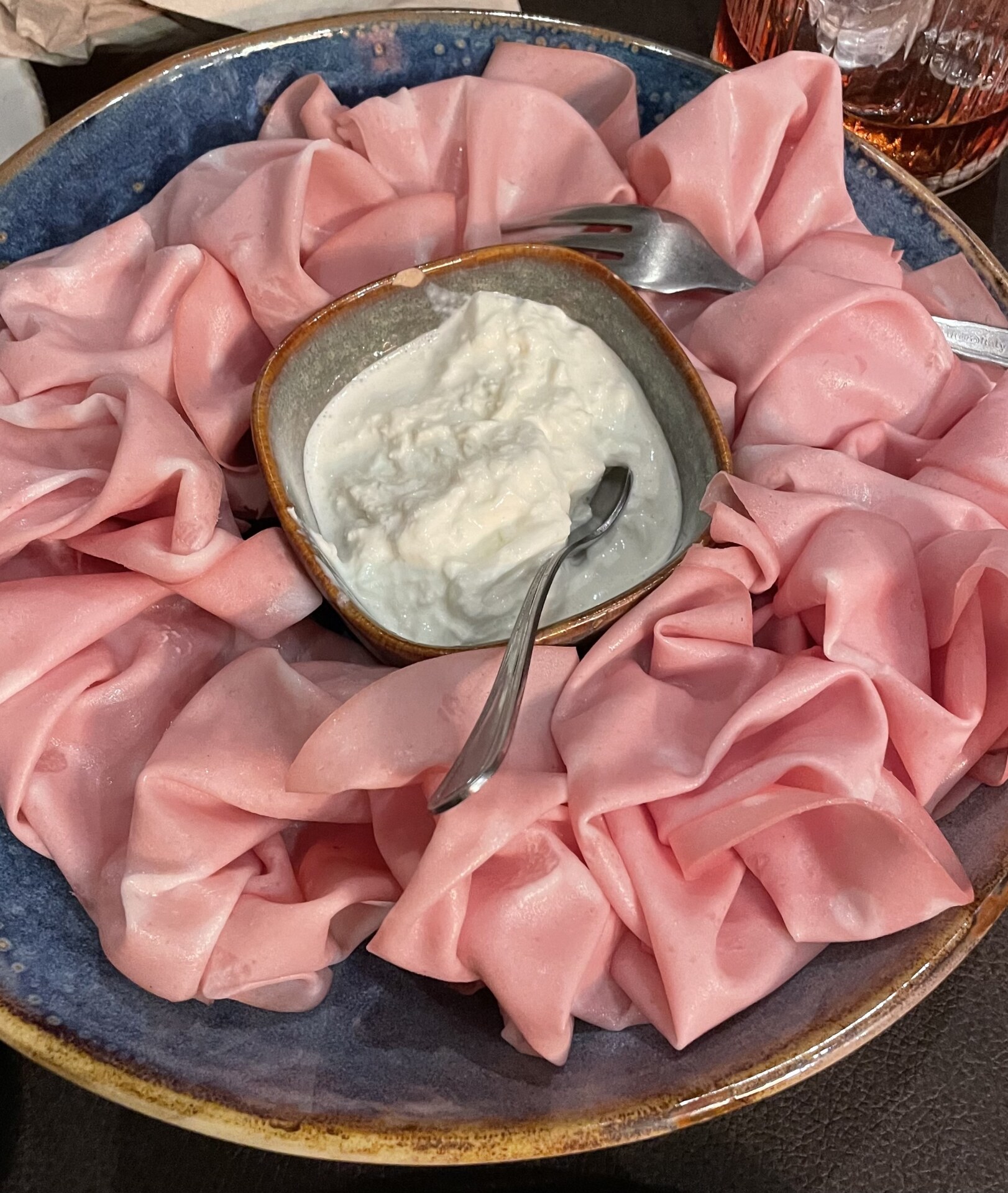
Mortadella
Friuli-Venezia Giulia: The DOP-protected prosciutto di San Daniele is a cut above your garden variety prosciutto crudo. In order to earn the official stamp of approval, it has to be made by one of a select few producers in the San Daniele region, while adhering to strict guidelines for salt content, aging, and pressing. The result is a finely cut prosciutto with a fragrant aroma and mild, buttery taste. (Don’t sleep, however, on the region’s other superlative crudo: prosciutto d’osvaldo.)
Lazio: Guanciale. Originating in Amatrice, guanciale is made from pork cheek, dry-brined in salt and pepper, and cured. The salt and pepper on the outside form a sort of crust, and the high-fat content makes it perfect for frying up and tossing in carbonara, amatriciana, or gricia.
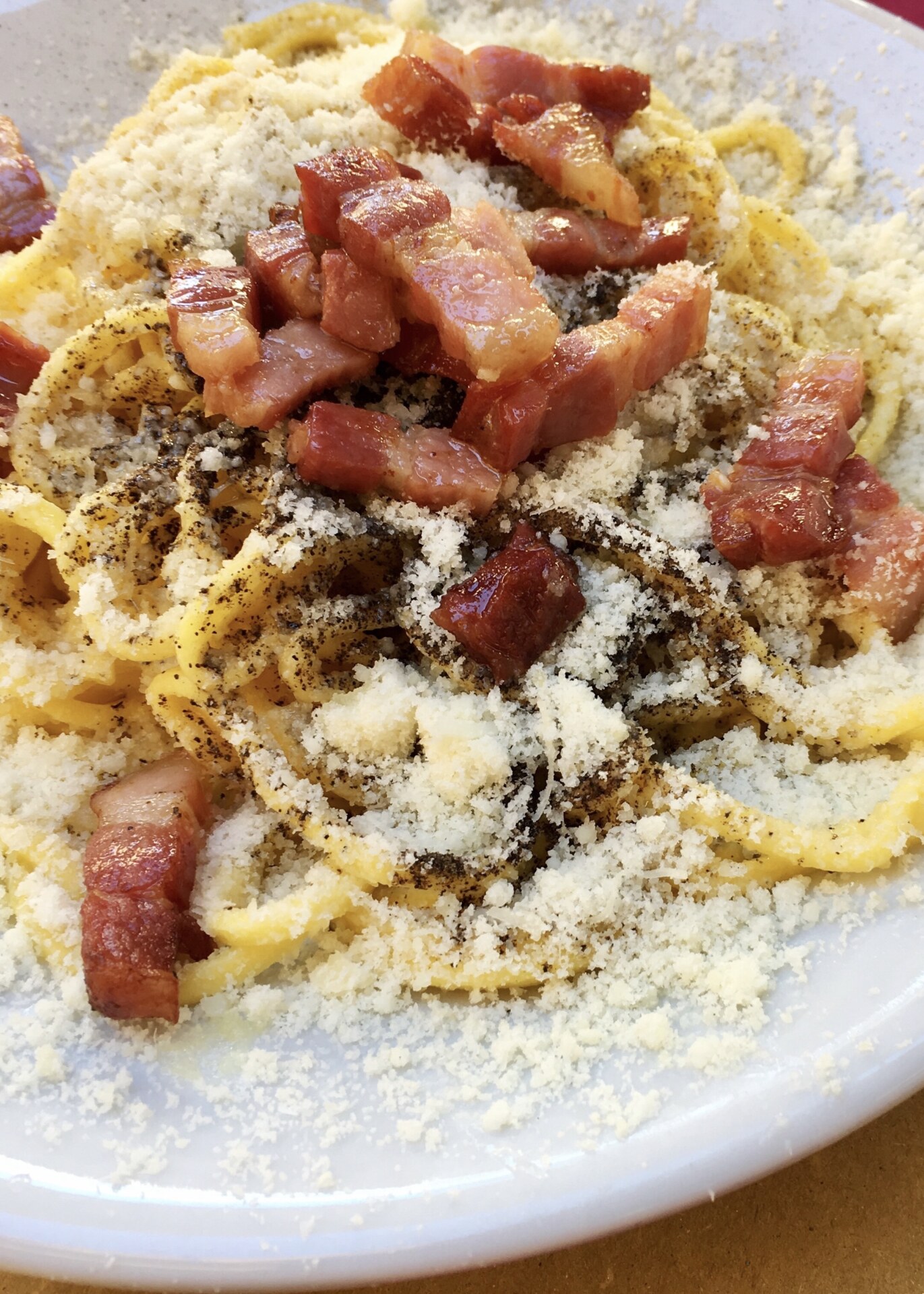
Carbonara
Liguria: Made throughout Liguria and Piemonte, mostardella is another prime example of cucina povera done right. It’s a sausage made from all the leftover cuts of pork and beef, so it’s never exactly the same twice. The meat is typically brined in wine and aromatics like garlic, rosemary, and pepper, then encased and dried. Back in the day, local agricultural workers would work in butcher shops in the off season, and be paid in mostardella rather than cash. And we thought the current minimum wage was low.
Lombardy: Bresaola della Valtellina. Produced exclusively in the Alpine province of Sondrio, this IGP bresaola is made from only the best cuts of Valtellina beef. The cattle are free to roam around the mountainsides and munch on meadow grass all summer, resulting in a winter production of bresaola with a rich, lean, uniform red color, pliable texture, and delicate aroma.
Marche: With its Latin name “ciabusculum”, making reference to a snack or small meal that farmer peasants would take into the fields for a to-go lunch, ciauscolo had humble beginnings. The soft, spreadable sausage is made from various pork trimmings, again, utilizing whatever was on hand. It’s perfect spread on a bruschetta or crostini, with a slightly peppery and delicate flavor.
Molise: Ventricina del Vastese. This Slow Food Presidium sausage has been produced in the Vastese region of Molise since at least 1811, and the method hasn’t changed much since. The best cuts of local pork—thighs, loin, and shoulders—are massaged with fennel, pepper, and the sweet-smokey red chilis from Altino, before being encased, hung, and dried by an open fire (usually in a room with a fireplace), for 7-8 days. It’s then left to dry for another three months in open air before being served. Historically, due to the fine cuts of meat and painstaking process, ventricina del vastese was served only for special occasions like the grape harvest.
Piedmont: A recipe originally crafted by the head chef of the Royal House of Savoy, salame Piemonte—an IGP-protected product—makes the most of the region’s best-loved export: wine. The pork is washed with a good glug of Barbera, Nebbiolo, or Barolo wine, giving the sausage a fruity, deep, tannic flavor.
Puglia: Capocollo di martina franca. This typically Pugliese variation of capocollo uses the region’s local herbs to flavor the pork, which is brined with vincotto (cooked wine), fragno bark (a tree only found in Puglia and Basilicata), and Mediterranean aromatics like almond peel, bay leaf, and thyme.
Sardinia: Salsiccia sarda. The sausage from the highly agrarian tradition of Sardinia is made from coarsely ground pork and flavored with mild spices and aromatic herbs typically found on the island, like wild fennel, cinnamon, garlic, and nutmeg. It’s been made here since the days of trade and barter economy and was a popular item to swap at the market for any number of household necessities.
Sicily: Lardo di maiale negro dei Nebrodi. Made using the dorsal lard from semi-wild pigs in the Nebrodi Nature Reserve, this lardo is cured with salt and seasonings for 90 days, resulting in a super fine, melt-in-your-mouth texture. Shave it super thin and serve it at room temperature as a blanket on focaccia or over fruit for a sweet-savory moment.
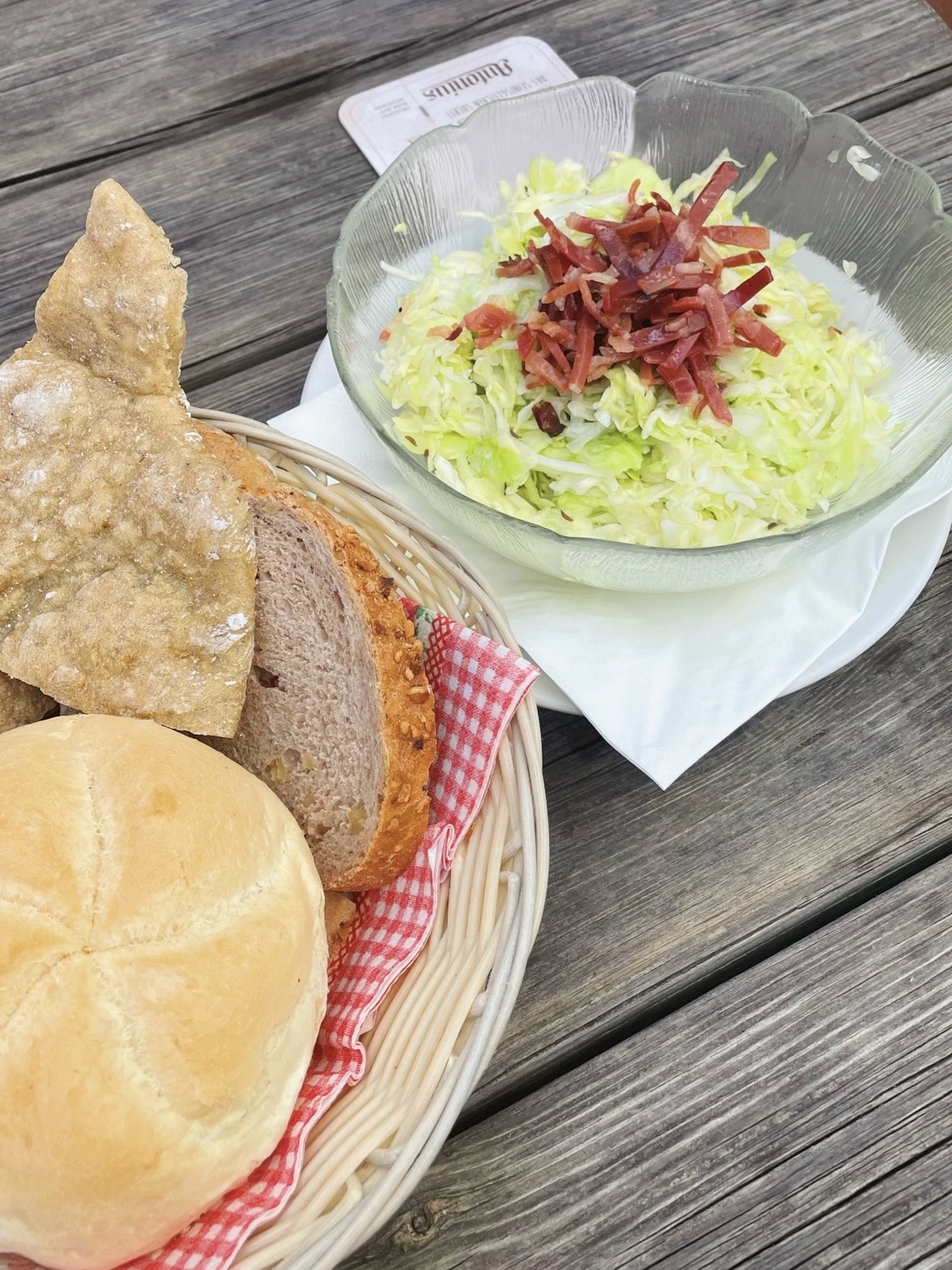
Insalata di cavolo cappuccio e speck
Trentino-Alto Adige: Another IGP-protected gem, speck is a lightly smoked, cured pork thigh that’s graced tables of Tyrolean royals since 1200 AD. Similar in texture and cut to prosciutto, speck has a woodsier, smokier taste, a perfect harmony between the salty cured meats of the Mediterranean and the smoking preservation methods of Northern Europe.
Tuscany: Finocchiona. Harking back to the Middle Ages, this fennel-studded salami came from a place of practicality. Pepper, like salt, was very expensive and difficult to acquire in Tuscany at the time, so butchers used fennel seeds instead, which were in abundance in Tuscan fields. Try the ones made with cinghiale (wild boar)—pests in Tuscan vineyards to this day that are allowed to be hunted for herd control—for an even more authentic taste of the way producers here work with what’s available to them.
Umbria: Produced since Roman times in the Perugia region of Umbria, you can tell prosciutto di Norcia from the garden variety type by its pear shape (and its brand, designating IGP status). In flavor, it’s less salty than other prosciuttos—and slightly spicy thanks to pepper in the brine.
Valle D’Aosta: Hailing from just along the Swiss border, DOP-designated jambon de Bosses has been produced in a tiny village of 450 inhabitants, in the shadow of the Bosses castle, since 1397. The leg of pork is brined with salt and a medley of Aosta Valley herbs and aromatics like thyme, genepì, mallow, savory, sage, and edelweiss, and aged at an altitude of 1,600 meters above sea level for at least a year. The result is a ham that’s aromatic with light salinity and a sweet finish.
Veneto: Sopressa Vicentina. Made in the Vicenza region, between the Dolomites and the Asiago Plateau, this lightly spiced, DOP-certified sausage is very much a part of the local territory and culture. So much so that it was depicted in a painting by Jacopo Da Ponte, Christ in the House of Martha, Mary, and Lazarus, in 1577 and has since been the guest of honor at local festivals that pop up around the region.


